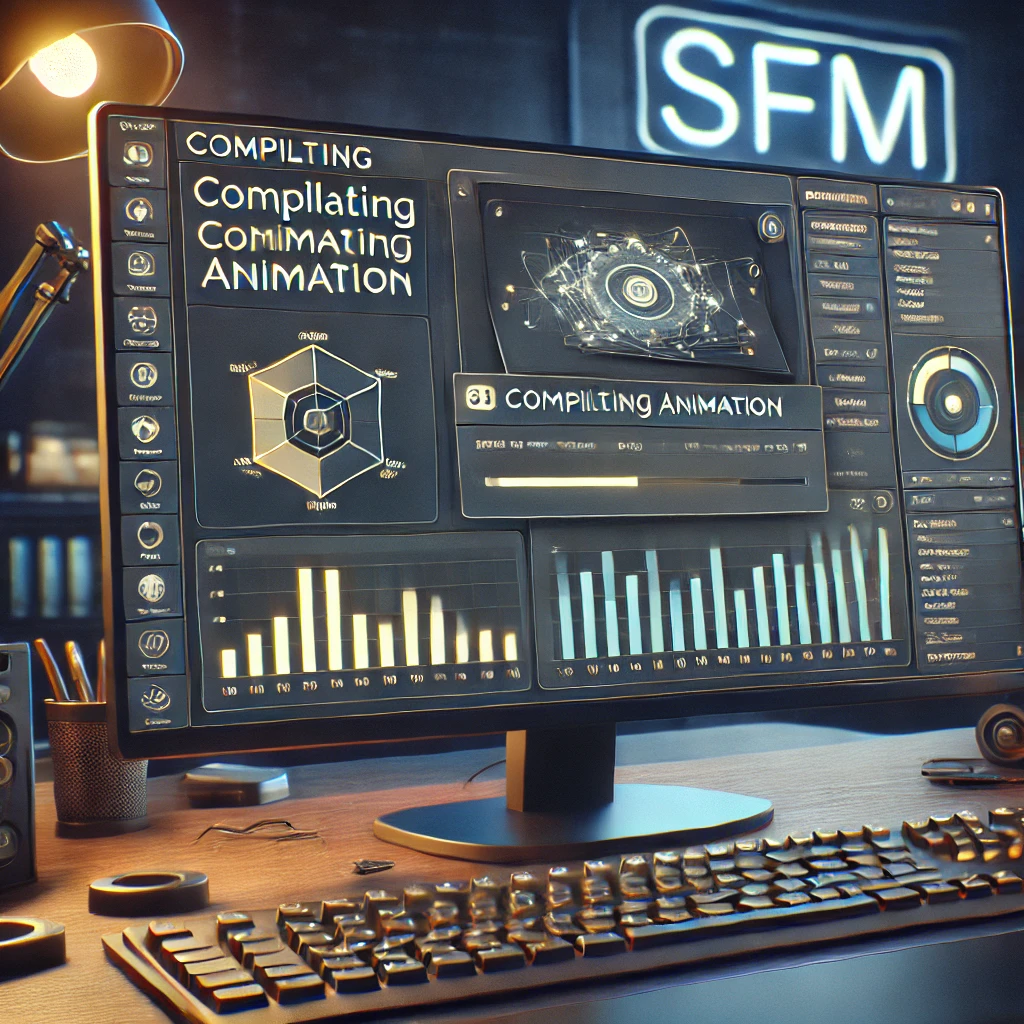What is SFM Compile?
SFM compile refers to the process of rendering and exporting an animation into a playable video format. Since SFM operates within Valve’s Source Engine, it has a unique way of handling rendering. Instead of a simple “Save as Video” option, SFM compiles animations using a sequence of images, which are later processed into a final video.
-Why is Compilation Important in SFM?
Compiling is what turns your masterpiece from an SFM project into an actual video you can share. Without proper compilation, your animations might have glitches, missing textures, or inconsistent frame rates. A smooth compilation process ensures your final render is polished and professional.
Setting Up Source Filmmaker for Compilation
Before you hit the render button, make sure your project is set up correctly.
Understanding the SFM Interface
SFM has a timeline-based animation system, with workspaces for motion editing, graph editors, and more. Familiarizing yourself with these will help you navigate the rendering process smoothly.
Preparing Your Scene for Rendering
A well-prepared scene reduces errors during compilation. Ensure models, textures, and lighting are in place. Use the “High” settings in the viewport to get an accurate preview of your final render.
Step-by-Step Guide to Compiling in SFM
Choosing the Right Settings
SFM allows multiple rendering settings. The best choice depends on your project:
- Image Sequence – Best for high-quality animations with post-processing.
- AVI Video – Faster, but lower quality and less control over editing.
Rendering Options: Image Sequence vs. Video
Rendering as an image sequence (TGA or PNG) is ideal for professional-quality results. It gives you more flexibility in post-production compared to a direct AVI export.
Fixing Common Rendering Issues
- If your render is too dark, check your lighting settings.
- Blurry renders? Increase the resolution and anti-aliasing settings.
- If SFM crashes during render, reduce memory usage by lowering texture quality.
Optimizing Your Render Quality
Resolution and Frame Rate Considerations
- 1080p at 24-30 FPS is standard.
- 4K rendering is possible but requires a powerful system.
- Higher frame rates (60+ FPS) can cause choppy playback in some cases.
Lighting and Shadows for Better Output
Good lighting makes a huge difference! Use multiple light sources and adjust shadows for a more cinematic look.
Avoiding Artifacts and Flickering
Render flickering often happens due to improper shadow settings. Use the Depth of Field tool to smooth things out.
Exporting and Editing Your Animation
Converting Image Sequences into a Video
If you chose the image sequence method, you’ll need software like Adobe Premiere Pro or DaVinci Resolve to convert it into a video file.
Post-Processing in Video Editing Software
Adding effects, transitions, and color correction in an external editor makes your SFM animation stand out even more.
Troubleshooting SFM Compile Errors
Crashes and Freezing Issues
If SFM crashes mid-render:
- Lower texture settings.
- Clear the cache before rendering.
- Close unnecessary background applications.
Missing Textures or Models
Ensure all assets are properly loaded before rendering. If textures are missing, use the console command mat_reloadallmaterials.
Audio Desynchronization Fixes
If the audio doesn’t match your animation:
- Check the frame rate settings.
- Render audio separately and sync it in post-production.
Advanced Compilation Techniques
Using Console Commands for Better Control
SFM has a powerful console for fine-tuning your renders. Commands like r_depthres can improve shadow quality.
Custom Shaders and Effects
For a cinematic feel, try using third-party shaders or depth of field effects.
Batch Rendering for Large Projects
Rendering large projects in sections and stitching them together later prevents crashes and improves efficiency.
Conclusion
SFM compilation might seem overwhelming at first, but once you get the hang of it, you’ll be creating stunning animations in no time. Whether you’re working on a small project or a full-length cinematic masterpiece, mastering the rendering process ensures your work looks as polished as possible. Keep experimenting with different settings, troubleshoot as needed, and most importantly—have fun animating!
FAQs
1. Why does SFM crash when compiling?
SFM crashes are usually caused by high memory usage. Lowering texture quality and closing other programs can help.
2. How do I make my SFM animations smoother?
Increase the frame rate to 30 FPS or higher, use motion blur, and ensure proper lighting for better quality.
3. Is rendering as an image sequence better than AVI?
Yes! Image sequences offer higher quality and more editing flexibility compared to AVI files.
4. What’s the best way to fix missing textures in SFM?
Try using mat_reloadallmaterials in the console or reinstall missing assets.
5. Can I export 4K videos from SFM?
Yes, but you’ll need a powerful computer. Rendering in smaller parts and combining them later is a good workaround.
